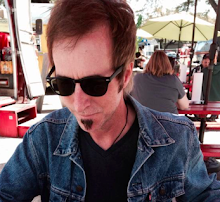Are you still trying to decide if there a
return-on-investment available through the use of social media? While you’re
waiting you’re losing. Losing future dollars. Losing relevance. The value of
your voice in the community is depreciating as patient-driven physicians are
amassing new wealth in the form of clout. Clout with future patients and clout
eventually becomes dollars.
Those doctors or healthcare organizations aren’t necessarily better at medicine than you. They’re simply better at culture. Your value proposition in the marketplace is what you know about achieving positive health outcomes. You’re pretty good at connecting that to a patient’s experience in the exam room, through a prescription or in surgery. But how’re you doing out there? You know, online via social media.
Still looking for something to prove it’s the right thing
for you? Well, how about letting me debunk some health care social media myths
for you. You know, tell you what it is
(and what it’s not).
It’s not a road to nowhere. It is a path to connectivity
with patients, their families, future patients and others who influence health
choices.
It is a way for you to maintain a general conversation with
the community that demonstrates a willingness to share information that might make
a difference in their wellbeing. By the way, people who share make more
friends. Friends refer friends. Friends are patients, too.
It’s not date night. Your patients are not asking you to out
to dinner. They’re simply looking to
connect through their preferred channel. And this one has emerged to be that.
It is by all evidence an affordable conduit to the future as
those with options choose providers, and those within plans sort one doctor or
organization from another based on word of mouth, ratings, and social media
manner—like bedside manner but on your smartphone.
It’s not a drive through window. Patients are not likely to
ask for a diagnosis of some ailment. They’re too private for that. They’re just
looking for something that might help them sift through clues about what ails
them and you’re their most trusted source for that kind of information.
Look, I don’t profess to know much about making money but I
have learned this, people connect with those who care. And caring starts with
sharing. Social Media is that.
